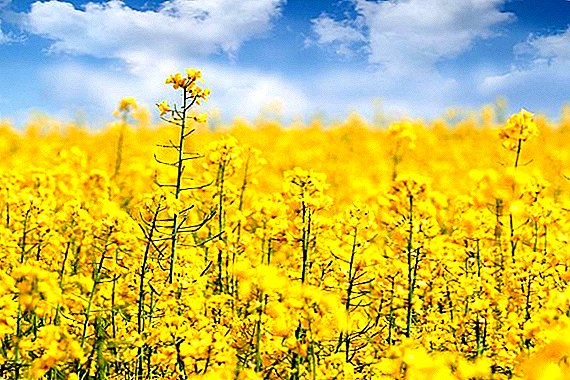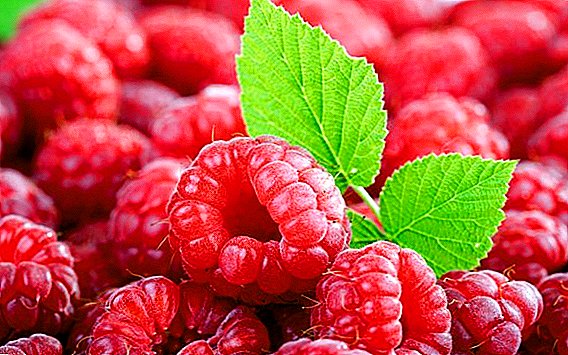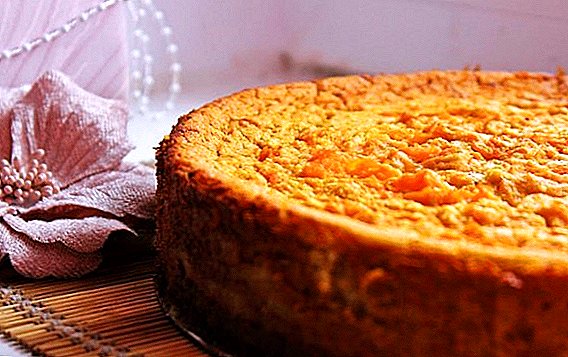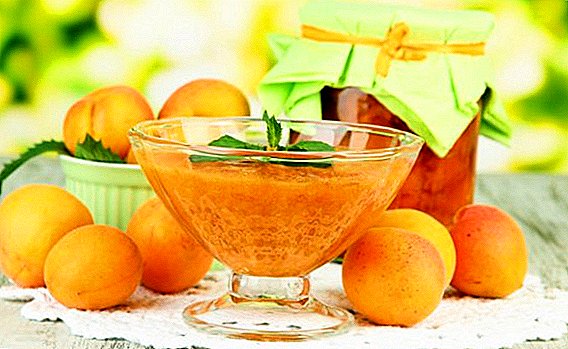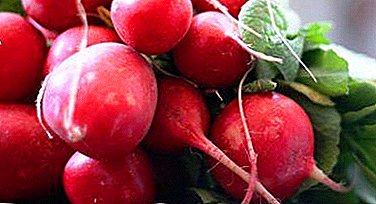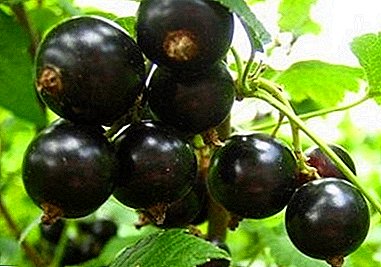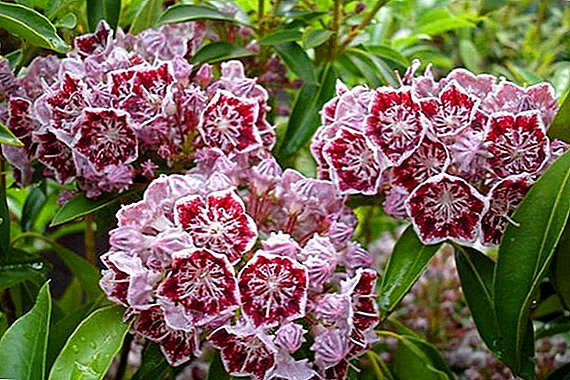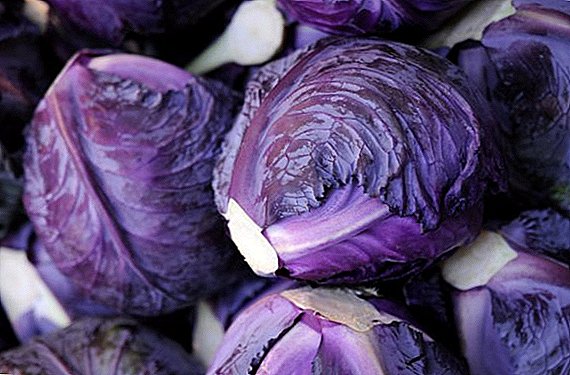 Red cabbage or lilac cabbage is one type of ordinary cabbage. Some people tend to believe that this type of cabbage is inferior in taste to white cabbage. However, it has much more useful properties, which we will discuss in this article.
Red cabbage or lilac cabbage is one type of ordinary cabbage. Some people tend to believe that this type of cabbage is inferior in taste to white cabbage. However, it has much more useful properties, which we will discuss in this article.
Description
This type of cabbage came to the territory of our country at the end of the seventeenth century. Its homeland is considered to be the coastal countries of the Mediterranean Sea (Algeria, Tunisia, Greece, Turkey). Lilac cabbage belongs to the cruciferous family and, according to the botanical description, is very similar to ordinary white cabbage. but The purple cruciferous plant is less susceptible to pests and diseases and tolerates winter frosts better. But these factors did not become the main ones for our summer residents, who consider this variety less tasty than white cabbage.  The lilac plant has very dense cabbages, violet-red leaves, sometimes with lilac-blue or purple shades. A special color is given to the plant by a special pigment - anthocyanin. The color of red cabbage depends on the type of soil and variety. If you plant a plant on acidic soils, then it will acquire a reddish tint. And if on alkaline - purplish blue.
The lilac plant has very dense cabbages, violet-red leaves, sometimes with lilac-blue or purple shades. A special color is given to the plant by a special pigment - anthocyanin. The color of red cabbage depends on the type of soil and variety. If you plant a plant on acidic soils, then it will acquire a reddish tint. And if on alkaline - purplish blue.
Did you know? Cabbage leaves of lilac vegetable contain some rare vitamin U, which helps to cure gastric and duodenal ulcers.The anthocyanin pigment, in addition to color, gives a specific sharp taste to the plant. The growing season of red cabbage averages 160 days. There are early, middle and late varieties. This vegetable can be kept all winter in a cool place, while it will not lose its beneficial properties.
Composition and calorie
The composition of this vegetable includes a lot of useful vitamins, minerals, macro-and micronutrients. Scientists conducted research and found out how many different substances are included in 100 g of the product; it turned out that it contains about 90 g of water, 1.4 g of proteins, 5.2 g of carbohydrates, 2 g of fiber and 0.15 g of fat.  The amount of vitamins and macro-and microelements per 100 g of product: vitamins of group B (thiamine, pyridoxine and riboflavin) in total occupy 0.35%, ascorbic acid (vitamin C) takes 5.7%, tocopherol or vitamin E - 0, 11%, vitamin A (beta-carotene) - 0.05%, vitamin K (phylloquinone) - 3.8%, iron - 0.8%, sodium and phosphorus are about the same amount - 2.8%, potassium - 24.3%, zinc - 0.22%, magnesium - 1.6%, the remaining percentage is occupied by some other useful substances.
The amount of vitamins and macro-and microelements per 100 g of product: vitamins of group B (thiamine, pyridoxine and riboflavin) in total occupy 0.35%, ascorbic acid (vitamin C) takes 5.7%, tocopherol or vitamin E - 0, 11%, vitamin A (beta-carotene) - 0.05%, vitamin K (phylloquinone) - 3.8%, iron - 0.8%, sodium and phosphorus are about the same amount - 2.8%, potassium - 24.3%, zinc - 0.22%, magnesium - 1.6%, the remaining percentage is occupied by some other useful substances.
A huge amount of nutrients of this vegetable can be seen with the naked eye. And even if you still did not know what the name of the red cabbage is, now, because of its enormous benefit, you will surely remember all the lost facts about this plant.
Important! Due to the large set of macro and microelements, the lilac vegetable does not lower and does not increase blood pressure, as many believe, but rather stabilizes it.By the way, red cabbage is considered a dietary product. A total of 310 kcal is contained in 1 kg of this product.

Beneficial features
The benefits of purple cabbage are very great for both children and adults. And the benefits of bringing leaves and vegetable juice.
Leaves
Red cabbage leaves contain a lot of vitamin C, twice as much as in its white form. And as you know, vitamin C has a positive effect on the human immune system, strengthens the walls of blood vessels, fights bacteria and viruses and supports normal mental processes. This vitamin is very useful for children whose immunity is not as strong as in adults.
A large amount of vitamin C is found in the fruits of actinidia, elderberry, honeysuckle, Manchurian walnut, white currant, raspberry, green onion, radish.
The benefits of red cabbage largely depend on the presence in its composition of such biologically active substances as phytoncides and anthocyanins. Phytoncides are able to inhibit the growth and development of various pathological microorganisms (microscopic fungi, bacteria, viruses, and even cancer tumors). 
Anthocyanins have a beneficial effect on the walls of blood vessels, strengthening them, thus reducing the risk of stroke and heart attack. They also do an excellent job with leukemia and have antioxidant properties.
Lilac cabbage has a characteristic bitter taste due to the presence in it of natural anticarcinogenic substances - glucosinolates. They are able to suppress abnormal and uncontrolled cell division in the human body, thus reducing the risk of developing cancer.
This useful plant has so many proteins that, in comparison with it, neither beets, nor carrots, nor turnips, nor any other plant can be supplied. Protein has a positive effect on the thyroid gland, so it is useful to eat purple cabbage with endemic goiter. In addition, the protein is very useful for the kidneys and the blood system of the body.
The red cruciferous plant of the cruciferous plant has a low content of very rare vitamins K and U. Vitamin K can reduce the deposition of salts on the walls of blood vessels and maintain the proper functioning of the cartilage tissue. But its deficiency in children can lead to deformation of the developing bones.
Did you know? Danish scientists have conducted studies that showed that eating this vegetable for women reduces the risk of developing breast cancer in two times.Purple cabbage does not contain sucrose and starch, but it is rich in fiber, so diabetics and overweight people successfully eat it. Fiber, in turn, is able to clear the vessels of cholesterol and normalize the intestinal microflora.
Lactic acid, which is also found in this plant, is very important for metabolic processes, the nervous system, muscles and brain. Myocardium needs lactic acid, which without it is not able to function normally.  How is purple cabbage useful for metabolic processes in the cells of the human body? This benefit is manifested in the presence of selenium, which is necessary for the enrichment of cells with oxygen. In addition, selenium supports the protective functions of the body, destroys pathogenic microorganisms, removes toxins and heavy metals, supports the correct functioning of the thymus and the thyroid gland.
How is purple cabbage useful for metabolic processes in the cells of the human body? This benefit is manifested in the presence of selenium, which is necessary for the enrichment of cells with oxygen. In addition, selenium supports the protective functions of the body, destroys pathogenic microorganisms, removes toxins and heavy metals, supports the correct functioning of the thymus and the thyroid gland.
At the dacha you can grow other, no less useful types of cabbage: cauliflower, Beijing, Savoy, kale, pak choi, broccoli, kohlrabi.Vitamin PP, which is found in small amounts in red cabbage, is able to transform and release cellular energy, as well as improve metabolism. Vitamin B9 improves intestinal motility, contributes to improved blood formation and relieves constipation. The active and proper functioning of the brain is favorably affected by zinc. And also popular opinion that this vegetable can increase the size of the mammary glands in women.
Juice
Violet vegetable juice, due to its unique wound-healing properties, is used in the treatment of gastric and duodenal ulcers. In addition, this juice has antiviral and antibacterial properties, so it has long been used to treat various viral diseases and tuberculosis. Due to the presence in the drink of vitamins A and C, it is used in baby food.  When eating juice, the condition of the skin of the face improves, it becomes more tender and acquires new shades of youth. This product can strengthen tooth enamel and nails. And when rinsing the hair juice, they become less brittle and softer.
When eating juice, the condition of the skin of the face improves, it becomes more tender and acquires new shades of youth. This product can strengthen tooth enamel and nails. And when rinsing the hair juice, they become less brittle and softer.
Bioflavonoids in cabbage juice can stop bleeding and strengthen capillaries. In folk medicine for a long time it was believed that the juice of a lilac vegetable with the addition of wine saves when bitten by a rabid animal. If you add honey to the cabbage juice, you get an excellent remedy for coughing.
Also, this product has a diuretic, so it is recommended to take people suffering from atherosclerosis and hypertension. If you rinse your mouth with the juice of a purple plant, then you can get rid of bleeding gums. And when you add to this drink decoction of cabbage seeds, you can get rid of insomnia. 
Important! Lilac vegetable helps to maintain clarity of mind with large feasts.Even in ancient Russia, cabbage juice was drunk to remove warts. In addition, cabbage drink is recommended to be used as a remedy for worms of various kinds.
What can be cooked from red cabbage
There are more than a dozen ways of cooking this vegetable. Many people like to experiment with different dishes. We will tell you about several main types of dishes from purple cabbage:
Salad of red cabbage. To prepare this dish you will need: medium head of lilac cabbage, a bit of greenery, one onion, vinegar, vegetable oil, salt and various spices to taste. Onions must first be pickled in vinegar. To do this, cut it into half rings, salt and sprinkle with spices, and then dipped in vinegar. Cabbage need to chop and a little salt. Then it is mixed with onions, dressed with oil and served on the table. Cabbage soup. It is cooked in meat (chicken, beef or pork). For 5-6 servings you need 300-500 g of chicken, from which you should get about two liters of broth. In addition to the half of the head of a violet vegetable, they add to the soup: onions, potatoes, garlic, greens and various spices. First, for 15 minutes, you need to boil the lilac vegetable, then throw the pre-diced potatoes and cook it for 20 minutes. Then you can add fried carrots with onions and cook another 15-20 minutes. The result is a delicious and vitamin soup. Stewed red cabbage with apples. To prepare this dish, we need: medium or large head of lilac cabbage, one large apple, several cloves of garlic, medium-sized onion, 30-35 ml of apple cider vinegar, 100 ml of water, pepper, salt and greens. First, take a thick-walled pan and coat it with oil. Then put there finely chopped onion and garlic, and fry everything until golden brown. Next, add chopped apple, but fry it for no longer than a minute. Now you can add shredded cabbage, water and vinegar. Stew it should be about 30-40 minutes, then pepper and salt, and add the greens. Marinated purple cabbage. To prepare the marinade, we need: medium head of lilac vegetable, 400 ml of water, 200 ml of apple cider vinegar, 50 g of sugar, 30 g of salt. Before pickling, cabbage should be chopped, salt and pepper and add cinnamon and cloves. Next, pour the marinade and let it brew for 2-3 hours. But the longer the mass will be infused, the tastier it will be. The above recipes are among the most popular. But do not be afraid to experiment, perhaps you will find for yourself the very recipe that will become your highlight.
Stewed red cabbage with apples. To prepare this dish, we need: medium or large head of lilac cabbage, one large apple, several cloves of garlic, medium-sized onion, 30-35 ml of apple cider vinegar, 100 ml of water, pepper, salt and greens. First, take a thick-walled pan and coat it with oil. Then put there finely chopped onion and garlic, and fry everything until golden brown. Next, add chopped apple, but fry it for no longer than a minute. Now you can add shredded cabbage, water and vinegar. Stew it should be about 30-40 minutes, then pepper and salt, and add the greens. Marinated purple cabbage. To prepare the marinade, we need: medium head of lilac vegetable, 400 ml of water, 200 ml of apple cider vinegar, 50 g of sugar, 30 g of salt. Before pickling, cabbage should be chopped, salt and pepper and add cinnamon and cloves. Next, pour the marinade and let it brew for 2-3 hours. But the longer the mass will be infused, the tastier it will be. The above recipes are among the most popular. But do not be afraid to experiment, perhaps you will find for yourself the very recipe that will become your highlight. 
Harm and contraindications of the product
Red cabbage, in addition to its enormous benefits, can also bring harm to the body. For example, high levels of magnesium, potassium, iron, and calcium can lead to flatulence and bloating. This vegetable is contraindicated in people who suffer from pancreatitis. In addition, a high content of fiber is very difficult to digest by the gastrointestinal tract.
Did you know? Riboflavin, which is present in small amounts in lilac vegetables, plays a big role in preventing cataracts.This, perhaps, and all the contraindications that are available. As you can see, they are scanty in relation to the benefits of this product. Therefore, if you do not have any of the above contraindications, you can safely get a lot of vitamins from this beautiful purple vegetable.


